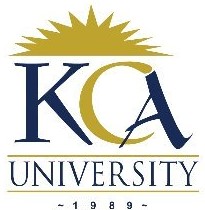
UNIVERSITY EXAMINATIONS: 2013/2014
ORDINARY EXAMINATION FOR THE BACHELOR OF SCIENCE
IN INFORMATION TECHNOLOGY
BIT 1207 COMPUTER APPLICATIONS SOFTWARE
(DISTANCE LEARNING)
DATE: APRIL, 2014 TIME: 2 HOURS
INSTRUCTIONS: Answer Question ONE and any other TWO
QUESTION ONE:[30 Marks]
a) Describe THREE advantages and THREE disadvantages of database approach.
[6 Marks]
b) Discuss THREE advantages and THREE disadvantages of file based systems.
[6 Marks]
c) Discuss THREE components of database management system (DBMS). [6 Marks]
d) Describe FIVE components of a database system. [5 Marks]
e) Describe the process of database management system selection. [4 Marks]
f) Explain any THREE disadvantages of distributed database. [3 Marks]
QUESTION TWO: [20 Marks]
a) Describe any THREE goals of database normalization. [3 Marks]
b) Discuss the following database models.
i. Relational model [2 Marks]
ii. Object oriented model [2 Marks]
iii. Hierarchical model [2 Marks]
iv. Network model [2 Marks]
c) Discuss the following database anomalies. Give example in each case.
i. Deletion anomaly. [3 Marks]
ii. Insertion anomaly. [3 Marks]
iii. Update anomaly. [3 Marks]
QUESTION THREE :[20 Marks]
a) Describe any SIX security measures intended to counter database security threats
[6 Marks]
b) Using the table EMPLOYEE below, write SQL statements in each case to perform
the tasks specified i-iv.

i). Display all employees whose names have letter i. [2 Marks]
ii). Display unique age values for the employees. [2 Marks]
iii). Calculate the average age for the employees. [1 Mark]
c) Define database integrity; hence describe the following types of database integrity
giving an example in each case.
i. Domain integrity.
ii. Entity integrity.
iii. Referential integrity.
iv). User defined Integrity.
[9 Marks]
QUESTION FOUR: [20 Marks]
a) Describe any FIVE functions of database management system(DBMS)
[ 5 Marks]
b) Transaction management deals with the problem of always keeping the database in a
consistent state .In doing so, a transaction must always maintain for properties.
Describe these properties and show how they relate to concurrency control and
recovery. [8 Marks]
c) One of the ways in which concurrently executing transactions can interfere with one
answer and compromise the integrity and consistency of the database is the
inconsistency analysis problem. Demonstrate in details how this problem occurs and
suggest a solution to it. [7 Marks]
d) Use the case study below and answer the questions that follow.
Members of a friendly society invest money in any one of the society’s branches. A
member may hold a number of investment accounts. Each investment account is
associated with the branch where it was opened, but money may be paid in or withdrawn
at any branch. For each account, the member holds an account book to record all
transactions.
i). Identify entity types in this case. [3 Marks]
ii). Identify the relationships. [2 Marks]
iii). Produce conceptual data model for this case. [3 Marks]
QUESTION FIVE: [20 Marks]
a) Normalize the document below to third normal form.

[10 Marks]
b) Describe the characteristics of a table that violates first normal form (1NF) and then
describe how such a table is converted to 1NF. [4 Marks]
c) Describe what is meant by full functional dependency and describe how this type of
dependency relates to 2NF. Provide an example to illustrate your answer. [6 Marks]